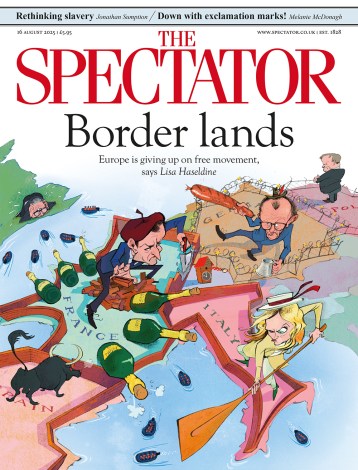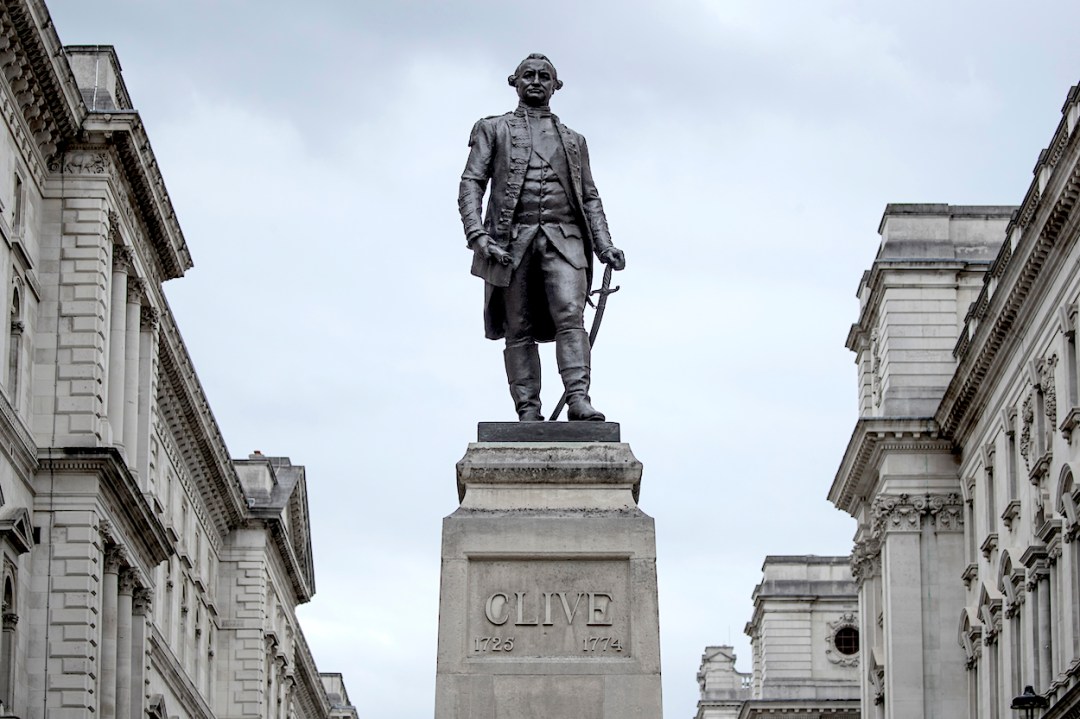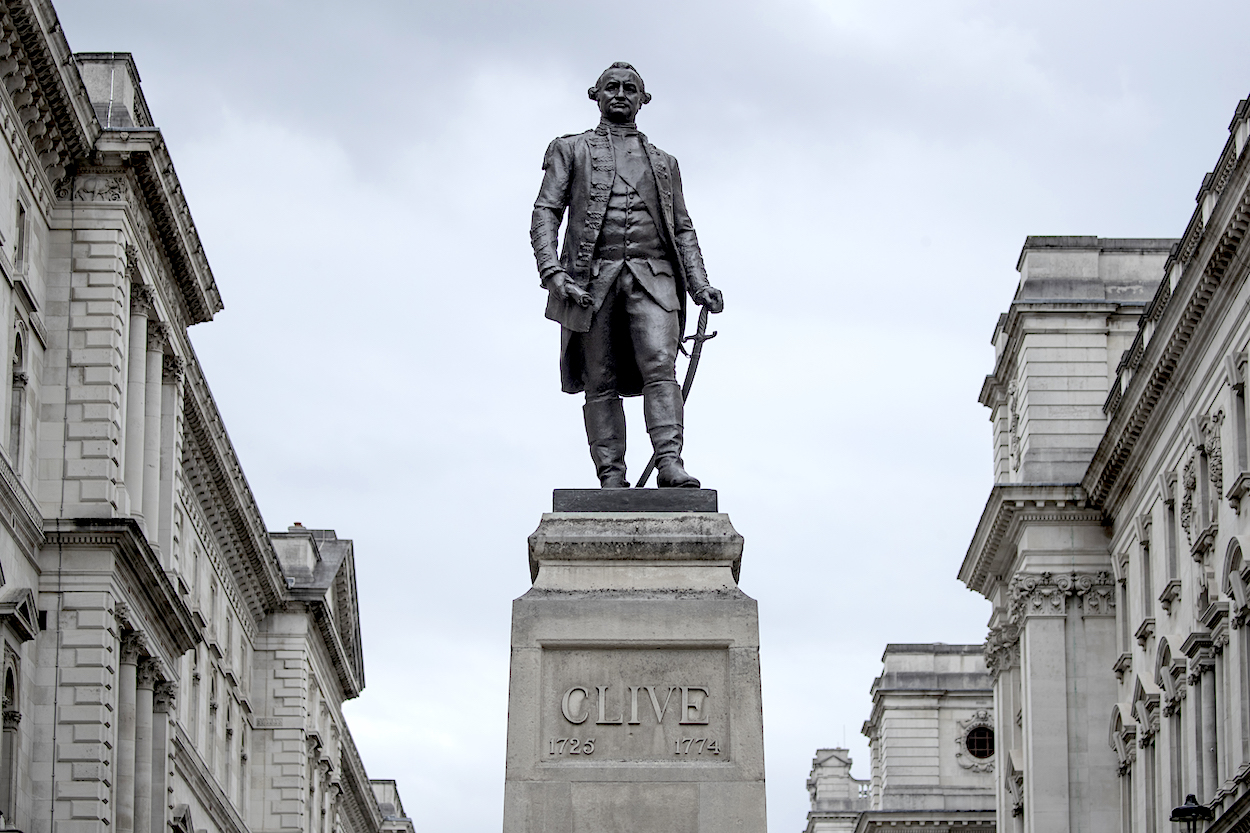Baroness Debbonaire, addressing the Edinburgh International Book Festival, has called for the removal of the statue of Clive of India, Baron Clive of Plassey, the site of one of his most famous military victories, from its prominent place adjoining the Foreign Office, at the end of King Charles Street, looking out across St. James’s Park from what are known as Clive Steps.
Clive was a founder of British imperial power and control over India. Twice governor in the mid-18th century, he was a brilliant military commander, a determined administrator and an opponent of corruption, though he himself became rich on the profits of empire. He fought warlords by becoming one of them himself. Subjected to waves of criticism for the way he governed from both the conscious-struck and jealous, and subject himself to bouts of depression, he may have taken his own life in 1774. His statue was erected much later in 1912, and like Clive in his own lifetime, was controversial and contested.
The statue of Edward Colston, the Bristol slave trader, was also erected just before the first world war and also commemorated someone who lived much earlier. It’s relevant to this new, confected controversy over Clive because Debbonaire was a Labour MP for Bristol until the last election, a veteran of the rancorous debates in that city over the Colston monument until it was pulled down by a mob in 2020. We might have hoped that the Baroness would have learnt the obvious lesson that disputes of this type set communities against each other and undermine social cohesion. Nobody wins, and society loses, in a culture war.
We might also have hoped that instead of demanding the removal of an artefact of which she disapproves, the noble baroness would have used her speech to call for a new work of public art beside the Foreign Office representing the values she holds dear. She could put herself at the head of a committee to raise funds for such a work. But speech-making, removal and perhaps destruction, are always easier (and more psychologically revealing) than working to win broad support for the commissioning of a new piece of art.
This prominent corner of official London is a work in progress. On one side of Clive is the entrance to the Cabinet War Rooms, Churchill’s headquarters in the Second World War that have been preserved for posterity. On the other side is a new monument to the victims of the Bali bombing of 2002. The area is rich with British history, its victories and tragedies, its heroes and villains. But the subtle and complex nature of the past is lost on Debbonaire who thinks it her right to judge for the rest of us.
She complains that on Clive’s statue, the frieze running around the base depicts ‘tiny, tiny little Indians’ as subservient. The common practice of sculpting, in miniature, key moments or themes in the life of those commemorated may be unknown to her. Does she also disdain the frieze running round the Albert Memorial, depicting great cultural figures, or the allegorical sculptures of Africa and Asia at its corners? Or the panels depicting the lives of ordinary people at the base of the statue known as The Meeting Place at St. Pancras Station where two lovers embrace high above scenes of everyday life, again captured in miniature? (The statue is disdained by our cultural elite, as it happens, but highly regarded by those same ordinary people.)
Debbonaire’s greatest mistake is to complain that Clive’s statue taints and distorts our relationship with India today. Wrapped up in the cliches of contemporary anti-colonialism, she is unaware of India’s profound interest in the British colonial past and respect for the legacies we left behind. She might spend some time reading the splendid essays by the Sri Lankan scholar Rohan Fernando, published by History Reclaimed, on the cultural and scientific inheritance from the Raj and its reception in contemporary India. The British founded dozens of museums across India; established scientific institutions such as the Indian Meteorological Department and the Archaeological Survey of India (whose Director, John Marshall, discovered the Indus Valley Civilisation exactly a century ago); mapped India’s terrain and geology; built canals and railways. All of these achievements are acknowledged and celebrated by an authentic Indian culture which is ever more at ease with its British past.
Debbonaire is not alone in her ignorance of these legacies, of course. University College, Oxford has decided to criticise its greatest son, Sir William Jones, who in the late eighteenth century first identified the family of Indo-European languages, wrote codes of Hindu and Muslim law, and began the study of Indian archaeology. A panel recently placed next to the great monument to him in the college chapel, sculpted by John Flaxman, confects a charge sheet of the usual offences. But Jones is revered by Indians as the founder of the study of their cultures: his grave in Calcutta is the site of regular commemorations and he even adorns a recent Indian postage stamp.
An Oxford college dishonouring a great scholar dishonours only itself. Baroness Debbonaire does greater damage, pitching us all into unnecessary disputes based on faulty history and imagined grievances.








Comments